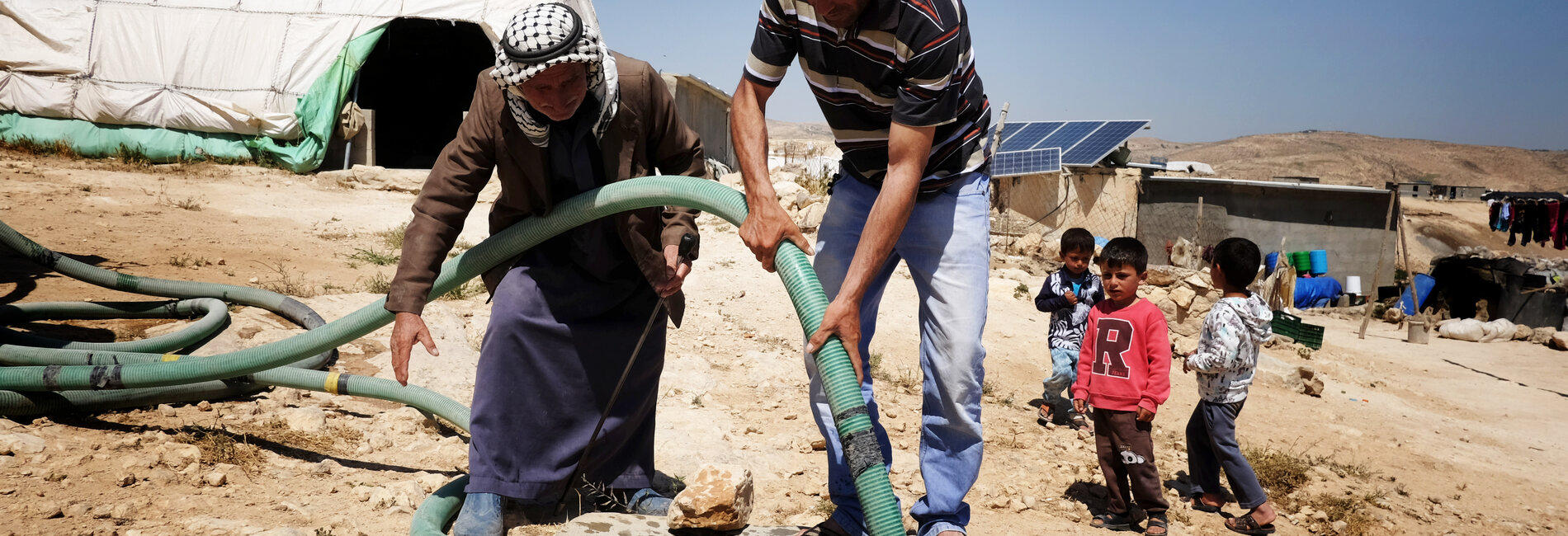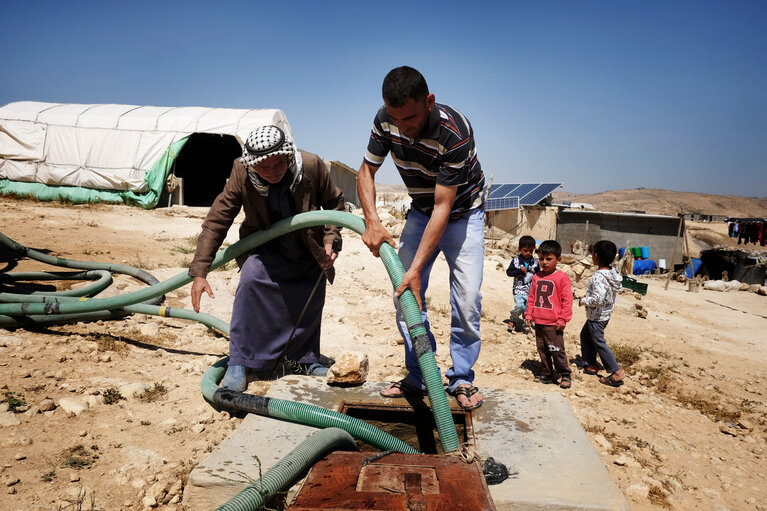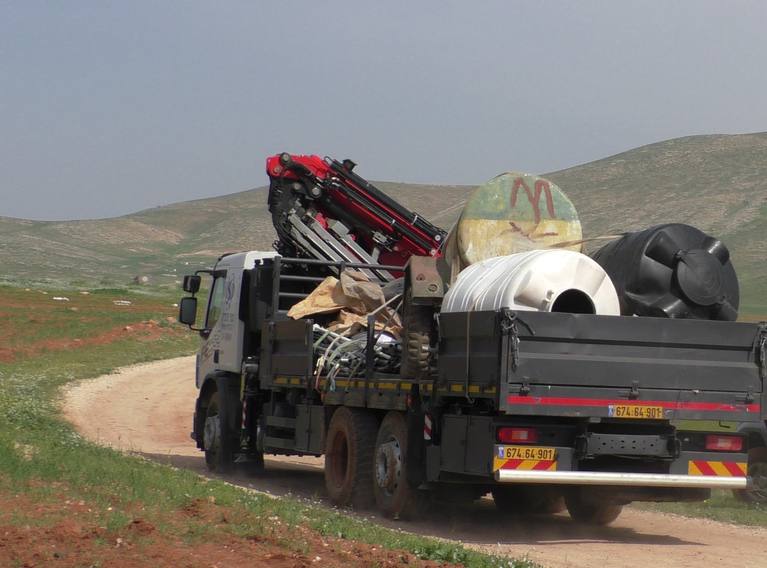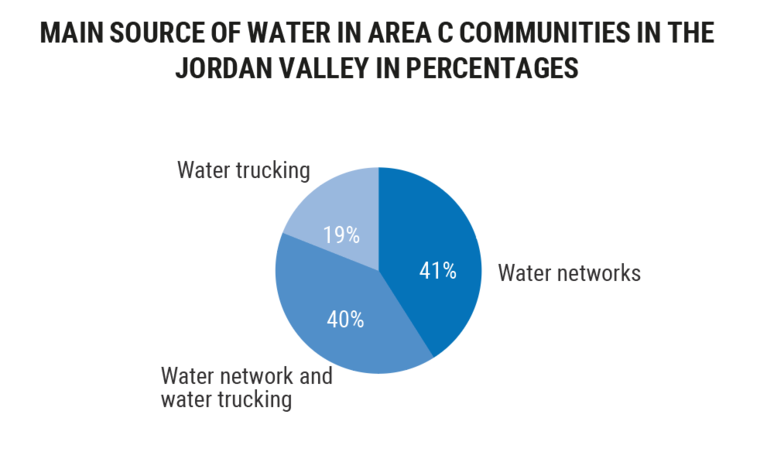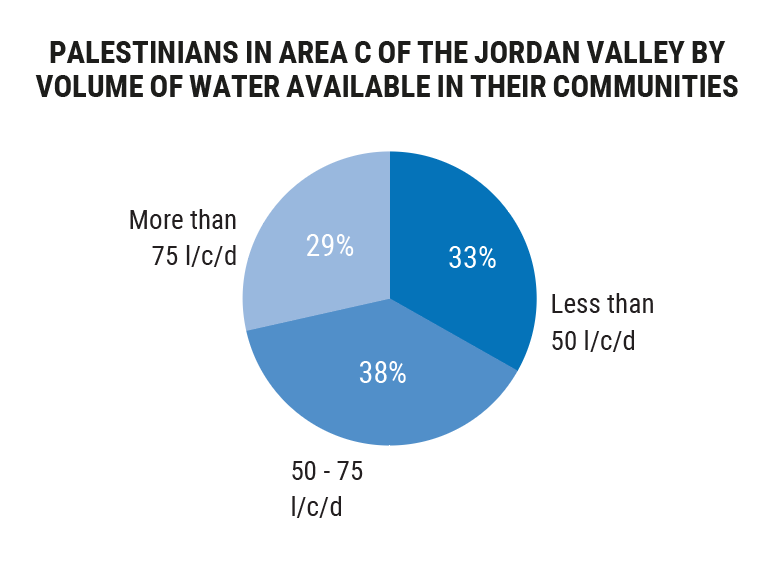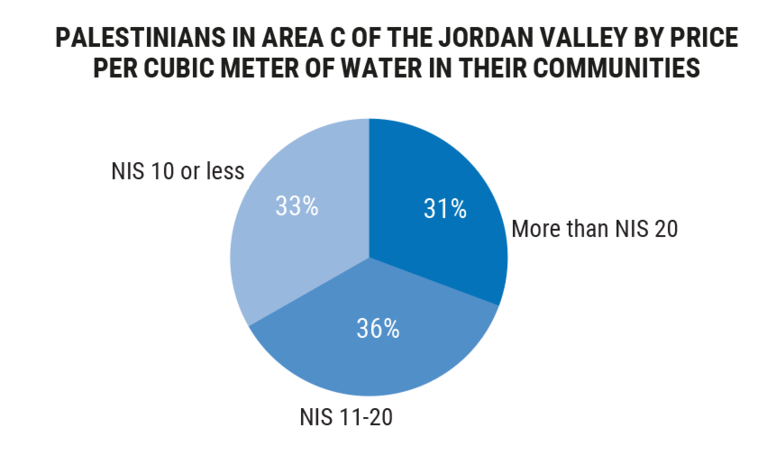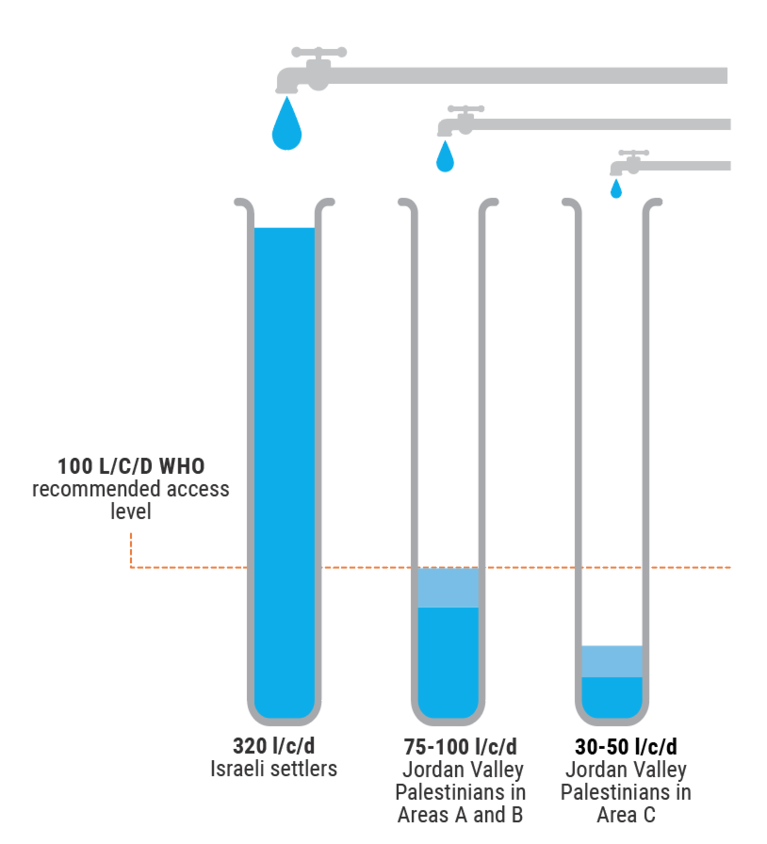Palestinians strive to access water in the Jordan Valley
This article was contributed by the Water, Sanitation and Hygiene (WASH) Cluster and its partners
“We used to buy tankered water at an extremely high price, but now it’s hard to even find anyone to bring us water out of fear that soldiers could confiscate the truck,” according to Salem, a 45-year-old father of five.
Salem is a resident of the Palestinian community of Humsa - Al Baqai’a, located in Area C in the northern Jordan Valley. The community is located mostly in an area designated as a ‘firing zone’ for Israeli military training, where Palestinian residency and access is prohibited by the Israeli authorities. On numerous occasions since 2012, the residents of Humsa - Al Baqai’a have been temporarily displaced by the Israeli authorities while they carried out military trainings in the vicinity. OCHA has recorded over 50 such incidents during this period.
In addition, since 3 November 2020, on six separate occasions, the Israeli authorities have displaced most of the community by demolishing and confiscating their homes and other structures. Most recently on 22 February this year, the Israeli authorities confiscated 18 residential and animal structures in addition to food parcels, unassembled structures, and water tanks. Most of these items had been provided as humanitarian response, following similar incidents that occurred on 1, 3, 8 and 16 February, during which 64 structures were demolished or confiscated, leaving some 60 people, including 35 children displaced. In a statement issued on 24 February, the Humanitarian Coordinator for the OPT, Lynn Hastings, called on the Israeli authorities to “immediately halt all further demolitions of Palestinian homes and possessions, allow the humanitarian community to provide shelter, food and water to this most vulnerable group and these people to remain in their homes.”
The community is not connected to any water or sewer networks and has no access to solid waste collection services. Consequently, residents have to buy water through private vendors at NIS40 (about US$12) per cubic metre, eight times the average price of water for Palestinians in the West Bank.[1] They also have to share latrines among several households and burn solid waste. After the November 2020 mass-demolition, the humanitarian community provided them with 20 water tanks, to address some of their water needs. Those were confiscated by the Israeli authorities on 22 February. Since then, private vendors have been reluctant to bring water to the community out of fear that their trucks might also be confiscated by the Israeli authorities.
In November 2020, Yaser, a father of eight children and a resident of Humsa - Al Baqai’a, has had his tractor and mobile water tank confiscated, his only means to transport water for his family and livestock.
“I used to travel about 15 kilometres every day to bring water for my family and livestock. The Israeli authorities confiscated our mobile tank in February and now private vendors refuse to bring water for me as they are now afraid of losing their tanks. Since the incident, I have sent all my family and livestock to a nearby community, as I can't provide them with water in our own home.”
Recent events in Humsa - Al Baqai’a are part of a wider pattern. Up to 31 March 2021, communities in the Jordan Valley have witnessed an over 400 per cent increase in demolition and confiscations (139), compared with the first quarter of 2020 (27). The Jordan Valley figures account for nearly 50 per cent of targeted structures and nearly 70 per cent of displaced persons in the first quarter of 2021.
Mapping people’s water needs in the Jordan Valley
UN and non-UN organizations responding to water, sanitation, and hygiene (WASH) needs coordinate their work through the local WASH Cluster. Between September and December 2020, WASH Cluster partners surveyed 68 Palestinian communities in the Jordan Valley. They assessed the WASH needs of each community, registered the services available, monitored how those services can be accessed and identified gaps that need to be addressed. The selected communities comprise some 60,000 Palestinians, 12,500 of whom reside in Area C, where Israel retains near exclusive control of the territory, including over infrastructure, planning, construction, movement and law enforcement. Due to the restrictive planning regime,[2] most Palestinian communities in Area C of the Jordan Valley are not connected to a water network, and/or face impediments in rehabilitating existing connections and constructing or repairing water cisterns.
According to the assessment, some 60 per cent of the Area C residents surveyed rely fully or partially on water trucking (see pie chart), obtaining water either from nearby wells, springs, or from filling points in other communities. Less than half of the residents (41 per cent) can rely solely on water networks. Also, due to the limited amount of water supplied through water networks, some 40 per cent depend on water trucking.
Limited access to water has driven many households to seek alternatives, such as rainwater harvesting and water trucking. However, due to the scarcity of rainfall in the Jordan Valley in recent years[3] and the high cost of trucked water, which is directly affected by access restrictions imposed by the Israeli authorities,[4] these alternatives cannot meet the communities’ basic domestic and livelihood consumption needs. Therefore, communities must resort to coping mechanisms, such as limiting their daily quantity of drinking water, which poses health and hygiene risks or reducing their water consumption for domestic and livelihood uses, which is affecting their domestic cleanliness, as well as limiting their abilities to maintain livelihood assets (such as livestock and agricultural lands). In addition, there are concerns regarding the quality of these water resources, since the lack of proper quality control and monitoring systems expose people to health risks linked to water-related diseases.
Due to access restrictions imposed by the Israeli authorities, poor infrastructure, and the risk of confiscation, the average water price ranges from two to four times the average in the West Bank generally (NIS5 or $1.50 per cubic metre), for 36 per cent of Area C communities in the Jordan Valley. For other communities (31 per cent), the access to water is even more expensive, reaching up to eight times the average price. Water consumption for these communities drops to less than 50 litres/capita/day (l/c/d), compared with the WHO recommendation of 100 l/c/d.[5] In comparison, all households in nearby Israeli settlements are connected to piped water services. These households have access to permanent and unlimited water supply at affordable prices (NIS9 or $2.8 per cubic metre for drinking use, and NIS2.8 or $0.9 per cubic metre for agricultural use). Such unlimited access to water result in water consumption rates of 300-440 l/c/d,[6] particularly in Israeli settlements focusing on agriculture.
The WASH assessment also revealed that sanitation facilities in these Palestinian Jordan Valley communities do not satisfy the WHO minimum requirements for adequate hygiene, privacy, and dignity.[7] Over 95 per cent of all the surveyed communities in the Jordan Valley are not connected to wastewater services, and many families do not have access to functioning mobile or fixed internal or external latrines. According to WASH Cluster partner, WeWorld-GVC, community members report that without sufficient facilities they are exposed to safety risks and, deprived of privacy, when seeking a space for open defecation or in sharing a latrine with other families.[8]
Fatima, a 36-year-old mother of six, and resident of Humsa - Al Baqai’a: “Since we do not have enough latrines, I sometimes have to take my children in the middle of the night 50 metres away for defecation. We suffer violence from Israeli settlers. It is not safe.”
The assessment also highlighted that over 70 per cent of the communities (68) do not benefit from any solid waste service, leading families to burn, bury or dump their waste in their vicinity.
The limited access to WASH services in the Jordan Valley exposes residents to risks to their livelihood, health, and social life. Families are not able to maintain an acceptable level of hygiene, and many households are required to leave their communities during the hot summer months to find alternative water resources for their livestock. Children and elders are the most vulnerable to health risks, particularly during the COVID-19 pandemic. Women struggle to perform their traditional role of ensuring adequate health and hygiene standards for the household. Moreover, families in general cannot afford the increasing costs of accessing even minimal WASH services.
Helping Palestinians access water-related services
The WASH Cluster and its partners are working to improve safe and dignified access to equitable and adequate water and sanitation services for the most vulnerable communities in the Jordan Valley. The cluster provides household with latrines, polyethylene tanks and mobile tankers, and rehabilitates community cisterns. The cluster also advocates for the Israeli authorities to allow for unserved communities in Area C to be connected to piped water and sanitation services.
For the 2021 Humanitarian Response Plan, Cluster Partners submitted seven projects, worth $1.2 million, targeting 11,000 people in Area C communities in the Jordan Valley. If fully funded, these projects will involve the construction and rehabilitation of water pipes, household water cisterns, water trucking, the provision of latrines, in addition to hygiene promotion campaigns. To end-March, less than 20 per cent of the WASH request has been funded.
[1] The average price of water in the West Bank is NIS5 or $1.5 per cubic metre.
[2] For more information see Restricting Space: The Planning Regime Applied by Israel in Area C of the West Bank.
[3] The average annual rainfall in the Jordan Valley is 166 ml. In 2020, only 65 per cent of this figure was reached.
[4] Tubas Governorate Access Restrictions | July 2018.
[5] Domestic Water Quantity, Service Level and Health, World Health Organization 2003.
[6] WASH Cluster, 2021
